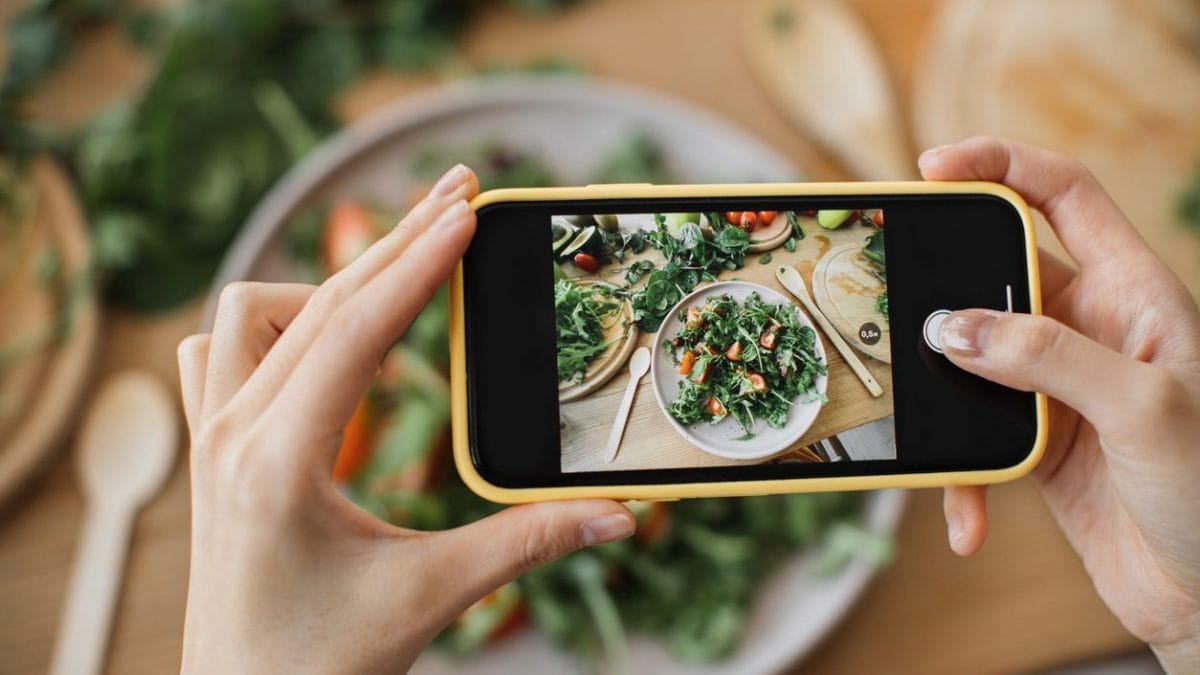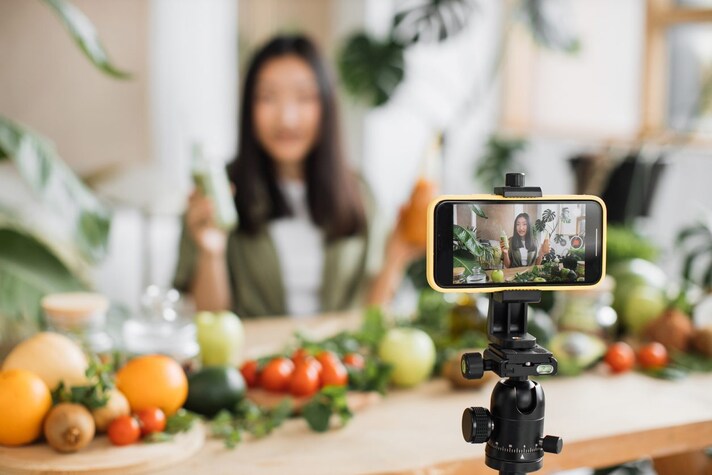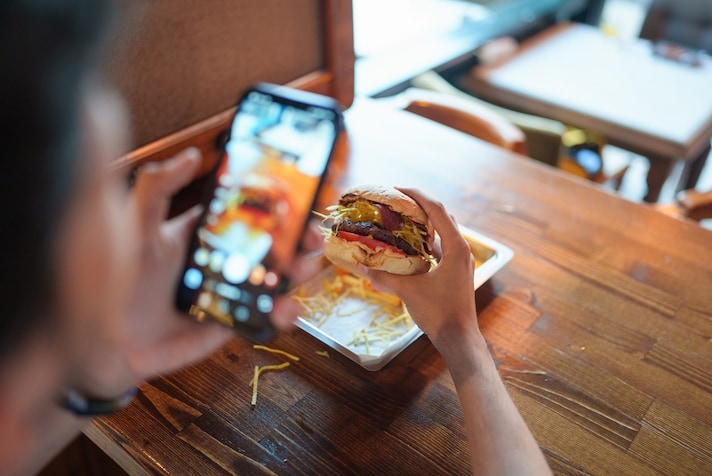
It is certainly not the latest social trend, but it is certainly among the most popular and loved by users, especially the younger ones. We are talking about "What I eat in a day", that is, a video of a few seconds in which the influencer or celebrity of the moment, especially a woman and in super shape, shows in detail what she eats during the course of her day: from breakfast to dinner, without forgetting snacks, drinks and other advice related to diet, well-being and fitness.
We asked Simone Gabrielli, biologist and nutritionist, if this kind of content can be an inspiration for people or, on the contrary, it can be dangerous and have negative consequences.
"The ‘What I eat in a day' trend can become dangerous, especially on social media, because it often implicitly conveys the idea that there is an ideal eating pattern that is valid for everyone," explains Gabrielli.
Those who watch those contents, especially adolescents who are already facing important physical and emotional changes, tend to compare, or even imitate, portions, frequencies and combinations, without knowing if they are suitable for their body, lifestyle or state of health. Without being able to understand, moreover, if what they are watching actually corresponds to reality.
"Every person has specific needs, linked to age, metabolism, physical activity, hormones, clinical or sports goals. Uncritically following another person's diet, however apparently healthy, can lead to nutritional errors, unnecessary restrictions or imbalances".
Furthermore, many of these meals feature low-calorie, protein, low-carb or keto-style menus that can be particularly triggering, to use a term dear to social media, for those who suffer from eating disorders. This type of problem, which has always existed, is unfortunately constantly growing: this is what data collected by the Bambino Gesù Pediatric Hospital in Rome says, which has shown a significant increase in new diagnoses , as much as 64 percent, in pediatric and adolescent age.
It is, therefore, a very delicate issue, which must be addressed with the most appropriate tools and with a certain critical awareness.
What I Eat in a Day: What Is It And Why Are We Attracted To It?
"What I eat in a day" is a sort of food diary, in video format, in which the influencer or public figure documents in detail his or her daily diet: breakfast, lunch, dinner and any snacks, with possible descriptions of ingredients, preparation techniques and, sometimes, nutritional information.
Creators may also share other information: such as the motivation behind certain choices, such as weight loss, muscle gain, a sports goal, intolerances or veganism, or other aspects related to lifestyle and daily routine, including workouts, hydration, skin care, journaling, meditation or general well-being.
But why do we like this type of format so much? It certainly has something to do with our innate curiosity, a very human feeling, and the desire to know what others eat, especially if they are people we admire or who have bodies and lifestyles we aspire to.
"From a gastronomic or inspirational point of view, it can offer ideas on new recipes, combinations and ideas for shopping – continues Gabrielli – but it is essential that those who communicate this content always specify that these are subjective examples and that each diet should be tailor-made, with the support of a professional".
So: it can be a visual or creative stimulus, but it must not become a model to follow, nor a comparison on "who eats better".

What I Eat in a Day: Why Can It Be Dangerous?
Despite their strong appeal, "What I eat in a day" can hide pitfalls and become a potentially harmful trend, especially for younger people and those who are more fragile and vulnerable. "If we consider that these contents circulate on social media, where the audience can be very young, we understand how risky they can be", our expert underlines with concern.
In adolescents, who are still building their relationship with their body and food, daily exposure to rigid eating patterns, associated with an “ideal” physique, can have a strong impact, contributing to the emergence or reinforcement of eating disorders, such as excessive restriction, orthorexia, binge eating or food-related guilt.
Seeing apparently "perfect" bodies, the result of often unsustainable or nutritionally inadequate diets, can generate comparison and feelings of inadequacy, frustration and anxiety. Food is often reduced to simple numbers (calories, fats, proteins, carbohydrates), classified as "good" or "bad" or there is a tendency to demonize entire food groups, such as carbohydrates, fats or gluten, without a real medical need, promoting a distorted view of nutrition.
Finally, let's not forget that most of the creators and influencers who show their "typical day" are not dieticians, nutritionists, doctors or experts in the sector, and that their suggestions are based on entirely personal experiences – which, among other things, do not reflect their diet as a whole – and not on scientific data or professional knowledge.

Other Dangerous Trends
In addition to the various "What I eat in a day", there are many social contents, linked to nutrition, that can be potentially dangerous: videos in which certain foods or dietary protocols are praised, see the various low-carb or keto diets, in which certain categories of foods are pointed out, such as the infamous carbohydrates or fats, or in which fit, low-fat or protein recipes are suggested.
Then there is another type of content that is very popular on the web: videos in which some people, often overweight or obese, binge on food. Among these, it is impossible not to mention mukbang, a phenomenon born in South Korea, in which people film themselves while eating large quantities of food, often interacting with their audience in real time. Extremely popular on social media, especially on YouTube, Twitch and TikTok, it has often been the subject of criticism because it promotes unhealthy eating behaviors, such as binge eating, and increases the risk of metabolic and cardiovascular diseases.
But what are social media platforms doing to curb this type of content and further increase the level of control? Many have implemented or are updating their community guidelines and content policies, with a particular focus on preventing eating disorders and promoting a healthy lifestyle.
Formally, all content that encourages any behavior related to calorie restriction or eating disorders is prohibited, while content that promotes recovery from an eating disorder, for example, is allowed, as long as it is presented with the right language.
There is a tendency to ban those that promise "miracle cures" or unrealistic weight loss and, recently, at least in intent, there seems to have been a crackdown on those paid contents, or the result of collaboration between influencers and manufacturing companies, that sponsor supplements and dietary products of dubious efficacy. Despite the efforts, however, it still seems a long way off and a greater commitment is needed from everyone – social media, creators and users themselves – with the ultimate goal of protecting young people and the most fragile people, and creating a safer and more positive virtual environment.
;Resize,width=767;)
